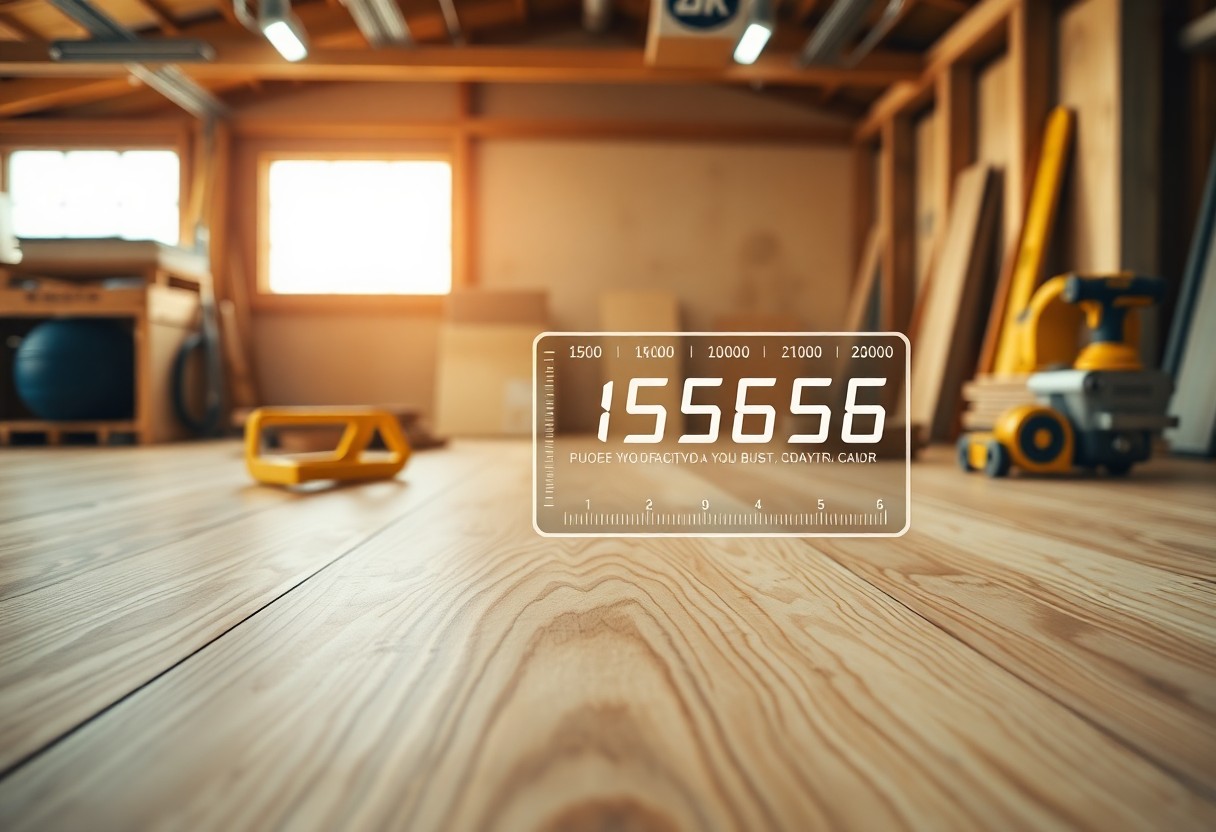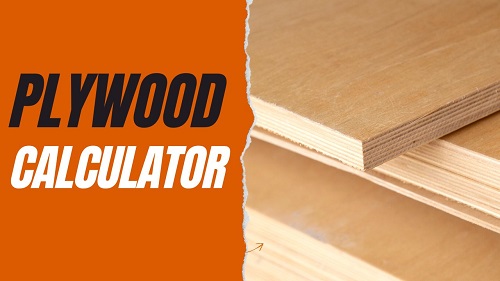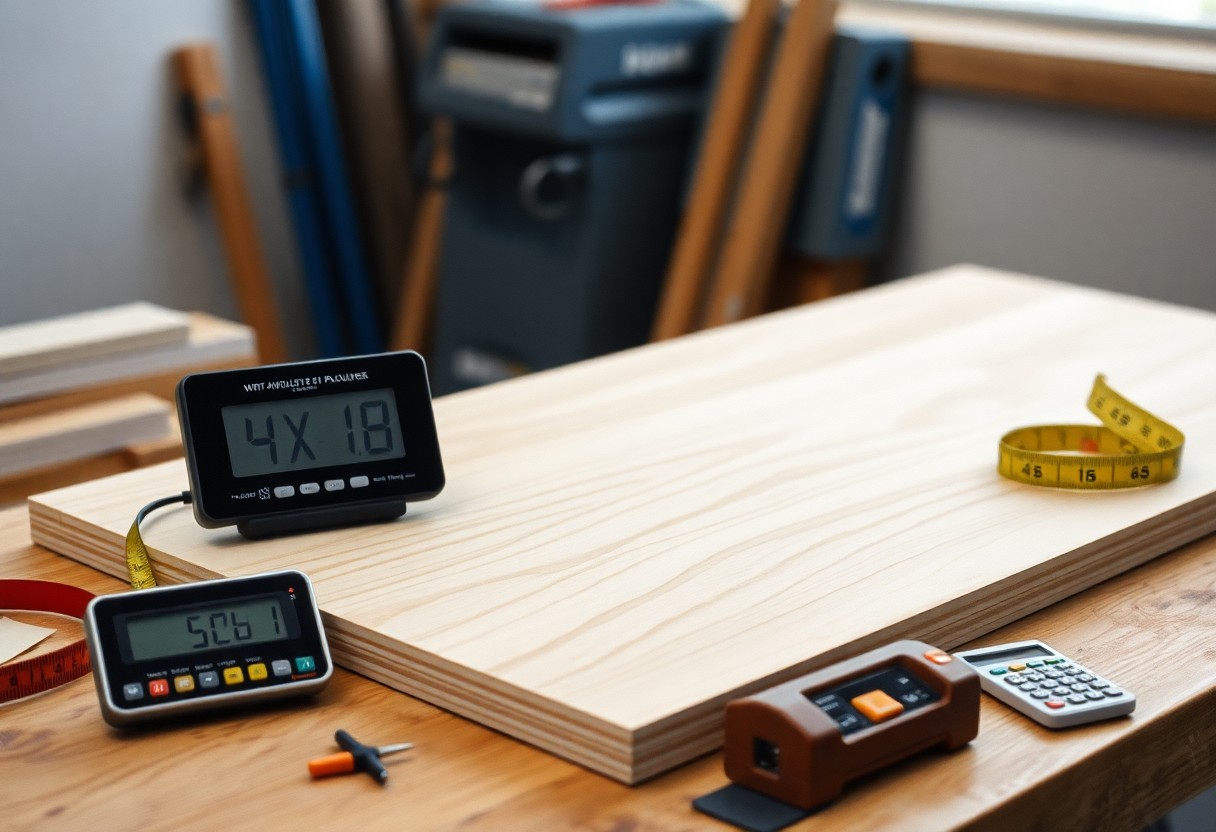When it comes to the construction world, understanding the attributes, properties, and capabilities of your materials is integral to a successful project.
One such crucial material is plywood, a ubiquitous player in many structures due to its flexibility, affordability, and adaptability.
This essay aims to provide detailed insight into plywood types and thickness, illustrating how these characteristics can impact the overall weight that the material can support.
Additionally, it guides you through the imperative concept of load distribution, illustrating its key role in determining how weight interacts with your plywood, whether it’s serving as a floor, wall, or piece of furniture.
| Feature | Plywood Weight Capacity Calculator |
|---|---|
| Material Selection | – Choose from various plywood types such as hardwood, softwood, marine-grade, etc. |
| Panel Dimensions | – Input the dimensions (length, width, thickness) of the plywood panel. |
| Load Type | – Specify the type of load: uniformly distributed, concentrated, or dynamic. |
| Load Distribution | – Choose how the load is distributed across the panel (e.g., evenly or off-center). |
| Safety Factor | – Adjust the safety factor to ensure a margin of safety for the calculated capacity. |
| Weight Capacity Result | – Get the maximum weight the selected plywood can support based on input parameters. |
| Recommendations | – Receive recommendations for the most suitable plywood type and thickness for the given load. |
| User-Friendly Interface | – Intuitive and easy-to-use design for quick calculations. |
| Usage Guidelines | – Access information on safe practices and load limits for plywood applications. |
| 3D Visualization | – Optional feature to visually represent load distribution on the plywood panel. |
Plywood Weight Capacity Calculator
Plywood Weight Capacity Calculator
Maximum Weight Capacity:
0 lbsDelving into the World of Plywood: A Deep Dive into Different Types and the Role of Thickness in Weight Capacity
One of the many marvels of modern science and engineering is the ability to manipulate natural resources to suit various needs and applications, elevating human capabilities to new heights.
Plywood is a perfect example of such scientific ingenuity. An engineered wood product, it exemplifies versatility, practicality, and robustness, characteristics that have undoubtedly been noticed by avid builders and architects.
This article seeks to provide a comprehensive insight into the diverse types of plywood and how thickness plays a pivotal role in determining its weight capacity.
Different Types of Plywood
| Type of Plywood | Description | Common Uses | Advantages | Disadvantages |
|---|---|---|---|---|
| Softwood Plywood | Made from softwood veneers | Sheathing, framing, subfloor | Affordable, lightweight | Limited finish options |
| Hardwood Plywood | Composed of hardwood veneers | Cabinetry, furniture, flooring | Attractive finish, durable | Expensive |
| Marine Plywood | Waterproof adhesive | Boat building, outdoor use | Excellent moisture resistance | Costly |
| Particle Board | Wood particles & adhesive | Furniture, cabinets, shelving | Smooth surface, cost-effective | Weak structural strength |
| MDF (Medium Density Fiberboard) | Wood fibers & resin | Cabinet doors, molding, furniture | Smooth surface, consistent thickness | Not suitable for load-bearing |
| Baltic Birch Plywood | Birch veneers with few voids | High-end cabinetry, laser cutting | Durable, fine grain appearance | Expensive |
Plywood’s versatility primarily rises from its diverse assortments, each catering to specific requirements. This difference in variety lies not in a capricious categorization but a meticulous identification of utility.
Softwood encompasses conifer wood like pine, spruce, and fir, renowned for structural applications.
Hardwood plywood, made from angiosperms like oak, maple, or walnut, is favored for aesthetically driven functions due to its seductively attractive grain.
Tropical plywood, originating from tropical climates, is reputed for its high-quality finish and durability.
Aircraft plywood, as the name plainly suggests, is used in airplane manufacturing with its excellent strength-to-weight ratio.
Decorative plywood (also known as overlaid plywood) is commonly used for cabinetry, furniture, and paneling with its surface often overlaid with hardwood.
Flexible plywood, aptly named for its flexibility, is predominantly used in furniture and architectural designs for its ability to achieve attractive curves.
Marine plywood, resistant to moisture, is favored in places of high humidity or where it will get direct contact with water.
The Influence of Thickness in Weight Capacity
Thickness directly impacts weight capacity – an essential characteristic for structural applications. The thicker the plywood, the higher is its weight capacity, enhancing its ability to support greater loads. But this isn’t to say that thicker is always better.
It’s a balance of nuances – a dance between durability, strength, and practicality. A detailed understanding of the specific project needs as well as the intricacies of different types of plywood can allow one to play this complex tune with the grace it necessitates.
While a cursory view may associate weight directly with density and thickness, it’s important to note that weight also varies with different wood species.
For example, the weight of an inch of Fir plywood differs from that of Southern Yellow Pine of the same thickness, even though they both constitute Softwood plywood.
In essence, the type and thickness of plywood greatly influence its weight, load capacity, and utility in various applications. It is the interplay of these factors that make plywood a truly versatile and coveted asset in modern-day construction and designing.
Through a deep understanding of these dynamics, we can begin to harness the full potential that lies within these unassuming layers of wood.

Grasp the Concept of Load Distribution
The Impact of Load Distribution on Plywood Weight Capacity
Plywood, having multifarious applications, requires an in-depth understanding of its physical properties to ensure efficiency and safety. Among these characteristics, load distribution significantly influences its structural integrity and weight capacity.
This article will elucidate on how various factors relating to load distribution affect plywood’s weight capacity.
Unquestionably, the manner in which load is applied to a plywood sheet implicates its weight capacity.
An evenly distributed load will decrease the likelihood of bending or breaking, while a concentrated or point load can lead to failure even if the total weight applied is below the plywood’s maximum weight capacity.
The fundamental principle being that the stress, or weight per unit area, is of greater importance than the total weight.
The orientation, particularly in relation to the grain of the wood veneers, plays a substantial role in load effect. Plywood is typically strongest when the load force is parallel to the direction of the grain.
In most high-quality sheets, the grain direction alternates with each layer, resulting in exceptional strength in multiple directions. When aligning the load direction with the grain, the plywood becomes capable of handling higher stress without compromising its structural integrity.
One cannot overlook ply configuration’s influence in load distribution. Distinctively, plywood is fashioned by bonding an odd number of thin veneer layers.
This configuration results in an equal number of layers with the grain running perpendicular to each other, which enhances the ability of plywood to distribute loads evenly, thereby augmenting its weight capacity.
The adhesives employed in plywood creation also come into play. High-quality adhesives, such as phenol-formaldehyde resin used in marine plywood, provide superior resistance to moisture, reducing potential weakening over time.
Moreover, these robust bonding agents contribute to the plywood’s overall strength, allowing it to maintain its weight capacity even when subjected to unfavorable conditions.
Lastly, the premise of considering the deflection limit is essential. The deflection limit, which marks the point at which plywood begins to permanently deform under load, impacts the weight capacity. Lower deflection limits mean the plywood keeps its shape under weight longer, thereby enhancing load-bearing capabilities.
Evidently, load distribution significantly influences the weight capacity of plywood. Acknowledging these factors allows us to harness the full potential of this versatile material, surpassing conventional understandings to propose innovative, pragmatic, and safe application solutions.
Through conscientious planning and understanding of the principles of load distribution, the boundaries of plywood use can be continually extended.

Calculating Plywood Weight Capacity
The purpose of meticulous calculations in determining the weight capacity of plywood is both fundamental and practical. While the nature of plywood varies greatly with its type and thickness, selection based solely on these parameters is not comprehensive.
Further factors come into play when accurately calculating the weight capacity of plywood, which extends beyond the basic characteristics of plywood types previously elaborated upon.
One of the crucial determinants of weight capacity is how load is distributed on the plywood. Unvaryingly dispersed loads distribute the stress evenly across the plywood sheet thereby enhancing its weight capacity.
On the other hand, concentrated or point loads, which focus the load over a small area, can significantly reduce the weight capacity as localized stress leads to early failure.
An equally essential element to be accounted for is the orientation of grain in plywood. The direction of wood fibers, which create the grain, is typically oriented perpendicularly in adjacent layers, in a pattern known as cross-graining.
This method enhances the stability of the plywood under load by balancing the longitudinal and transverse strengths. The astute planner must be observant of these inherent properties of wood when calculating the weight capacity.
The ply configuration, that is, how the layers of wood are arranged, is a fundamental determinant of load distribution and, by extension, weight capacity.
A balanced plywood structure sees equal numbers of plies oriented in transverse and longitudinal directions, promoting structural stability, and optimizing load-carrying capacity.
However, unequal configuration can induce warping under stress, exerting an underlying influence on the weight capacity.
Also pertinent to the discussion is to evaluate the role of adhesives used in plywood. The tapestry of multiple veneer layers is held together by adhesives, which must maintain their integrity under the applied load.
Providentially, modern adhesives exhibit remarkable permanence and load-bearing capacity, allowing them to play a crucial role in plywood’s overall weight handling ability.
Lastly, bending or deflection limit of plywood must not be overlooked when considering the plywood’s weight capacity. Typically, deflection should not go beyond L/240 of the span length under full live load for a satisfactory performance. If the deflection limit is exceeded, then the plywood will flex or bend, reducing its weight capacity.
In line with this, no single factor can fully dictate the weight capacity of plywood. Indeed, estimating the weight capacity of plywood involves an integrated understanding of multitude of variables.
The specifics of each must be accounted for to improve the precision of figured projections. Thus, the exploration of plywood weight capacity extends beyond surface-level considerations, pushing the boundaries of wood science and material engineering. Such meticulous, science-driven inquiries align with the broader objectives of sustainability, safety, and functionality in modern construction.

With an understanding of the varied types of plywood, their corresponding thicknesses and properties, as well as an appreciation for the role of load distribution, you are now equipped with the knowledge needed to calculate the weight capacity of plywood.
The practical step-by-step guide provided should serve as a useful tool, enabling you to consider weight limits in your current and future projects confidently and effectively.
This newfound comprehension not only enhances safety and structural integrity but also opens up a world of potential when it comes to innovative design and efficient use of this versatile building material.
Helpful Questions and Answers
How much weight can plywood hold?
The weight plywood can hold depends on various factors such as thickness, quality, and support structure, but typically ranges from 50 to 100 pounds per square foot.
What is the weight of 8x4 plywood?
The weight of 8x4 plywood varies depending on its thickness and type, but on average, a sheet of 8x4 plywood weighs between 45 to 60 pounds.
How do you calculate ply weight?
Ply weight is calculated by dividing the weight of a single ply of material by the number of plies used in the construction of the material.
How much weight can 3/4 plywood hold?
The weight that 3/4 plywood can hold depends on various factors such as the type of wood, grade of plywood, and distribution of load, but typically it can support around 50-70 pounds per square foot when evenly distributed.
How much weight can 1/2 plywood hold?
The weight 1/2 inch plywood can hold depends on various factors such as the type of wood, the quality of the plywood, and the distribution of the load, but typically it can support around 40-50 pounds per square foot when evenly distributed.
How much weight can a plywood cabinet hold?
The weight a plywood cabinet can hold depends on various factors such as the thickness of the plywood, the quality of construction, and the distribution of weight, typically ranging from 50 to 200 pounds per square foot.
How much does a sheet of osb weigh?
A standard 4x8 sheet of OSB (oriented strand board) typically weighs between 45 to 50 pounds.





![1/2 vs 3/4 Plywood for Cabinets [Unlimited Guide] 12 vs 34 Plywood for Cabinets](https://woodpander.com/wp-content/uploads/2023/11/12-vs-34-Plywood-for-Cabinets.jpg)


